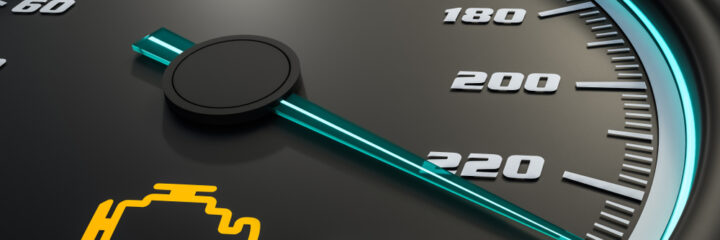The word “annoying” is an underestimation of that feeling you get when you’re driving to work, and then boom, the “Check Engine” light pops up on your vehicle’s dashboard. While you’re still wondering if the car will make it to your place of work or burst into flames in the next 10 seconds, the Check Engine warning disappears just as suddenly as it appeared.
You’re still confused, wishing you knew what exactly is going on, but at least the darn light is gone, meaning your car won’t be bursting into flames today. But just before you pull into the parking lot of your place of work, the light comes on again. Thank God you at least made it to work in time, but you’re going to spend the rest of the day distracted and wondering whatever might be wrong with your car and how much it would cost to fix it.
It’s bad enough that the light has to come on at all, and it doesn’t make it easier for it to do so intermittently. If your car’s computer is telling you to check the engine, you should, and you know it.
What Is the Check Engine Light?
The Check Engine light, also known as Malfunction Indicator Lamp, is a warning signal from your car’s onboard diagnostic system that something is wrong. But if the signal occurs intermittently, that is, the Check Engine light flashes on and off, it is probably an indication of a more serious problem, especially a misfiring of the engine.
Your vehicle’s engine comes with a set of cylinders where the gasoline is burned and turned into power to propel the vehicle. If one or more of those cylinders fail to produce power, the result is an engine misfire. Besides the triggering of the “Check Engine” light, the driver can tell the engine is misfiring by the vehicle’s hesitation or shaking while in motion.
If the Check Engine light pops on your dashboard, you’re most likely driving a more modern vehicle. Lots of things can affect a vehicle’s cylinder, including a clogged fuel injector, defective or worn-out spark plug, or faulty oxygen sensor. Your car or SUV may have up to eight cylinders. Naturally, the more cylinders a vehicle’s engine has, the more power it can produce and the more fuel it gobbles up.
What You Should Do When the Check Engine Light Flashes On and Off
The average driver may end up unsure of what to do with the intermittent flashing of the Check Engine light. Whatever you do, don’t imagine you can just wish it away. The Check Engine light is not always an indication of panic-worthy problems, but you certainly should not ignore the warning.
Even if the light is coming on and off, the best course of action is to meet up with your local mechanic, although learning about what it all means, like you are doing now by reading this, gives you some control over the situation so that you can fix the problem once and for all.
Generally, a problem in your car’s powertrain, including the engine, transmission, and related components, can trigger the Check Engine light. However, a random flashing of the Check Engine light can be due to a number of factors such as a faulty mass airflow sensor, loose gas cap, faulty oxygen sensor, and bad spark plugs. The one thing about bad spark plugs is that you can still keep driving around with them for a while.
If the random flashing is caused by a loose gas cap, the light should go off within 10 to 20 miles after you must have pulled over and tightened the gas cap. And, oh yes, overfilling your gas tank can also trigger the Check Engine light. That’s because excess gas in the tank can lead to leakage into the emission system. Because the emission system is designed for gas vapors and not liquid, it will force the Check Engine light to come on.


